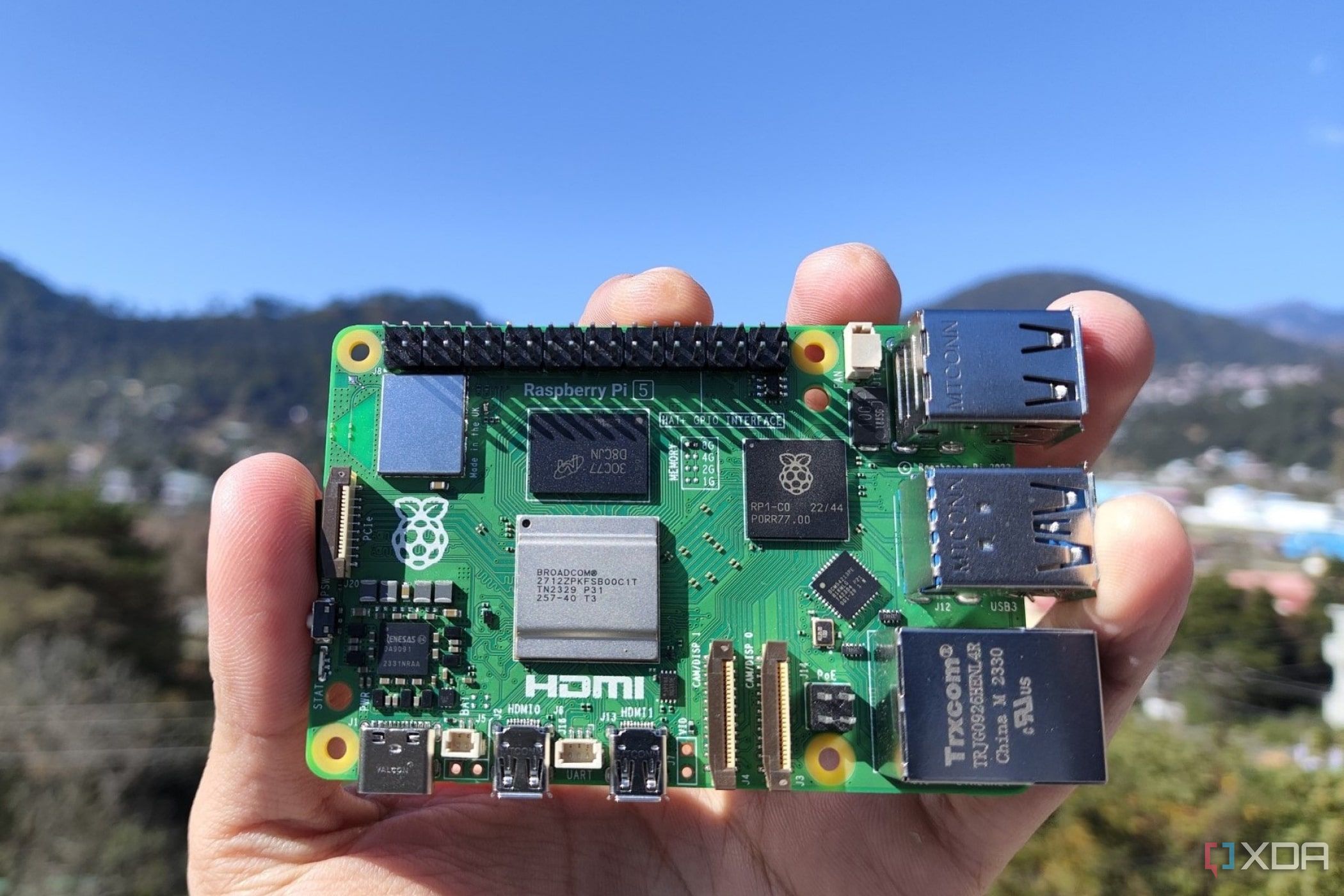How To Use Monitor Raspberry Pi Behind Firewall Without MAC: A Comprehensive Guide
So, you're thinking about setting up your Raspberry Pi for monitoring behind a firewall but don’t want to rely on MAC address filtering? Well, my friend, you've come to the right place. This guide is going to break down everything you need to know about using your Raspberry Pi securely without exposing it or relying on MAC filtering. Stick around, because this is going to be a wild ride filled with tips, tricks, and some serious tech talk!
Before we dive into the nitty-gritty details, let me clarify something for those who might not be familiar with Raspberry Pi. It's not just a tiny computer; it's a powerhouse for innovation, especially when you want to monitor systems remotely. However, security is key, especially when you're dealing with firewalls and private networks. This guide will show you how to set up your Raspberry Pi in a way that keeps it secure while still giving you access to all its awesome features.
Now, if you're ready to take control of your Raspberry Pi setup and ensure it stays behind your firewall without using MAC filtering, let's get started. Whether you're a beginner or an advanced user, this guide will provide you with everything you need to know. Let’s dig in!
- Unveiling The Life And Legacy Of El Chapo Edgar Guzmn Lpez
- Uncovering Tammy Bruces Partner A Personal Insight Into The Political Commentators Life
Here’s the plan: We’ll cover everything from setting up your Raspberry Pi securely to configuring your firewall settings and even touch on some advanced tricks to make your setup rock-solid. Ready? Let’s go!
Understanding Raspberry Pi and Its Role in Network Monitoring
First things first, let’s talk about what Raspberry Pi is and why it’s such a game-changer when it comes to network monitoring. The Raspberry Pi is a small, affordable computer that can be used for a variety of purposes, from home automation to server hosting. But one of its most powerful uses is as a network monitoring tool.
By setting up your Raspberry Pi behind a firewall, you can monitor your network activity, detect intrusions, and even set up alerts for suspicious behavior. The beauty of using Raspberry Pi for this purpose is its flexibility and affordability. Plus, it’s easy to configure and maintain, making it perfect for both home users and small businesses.
- Unveiling Heather Locklear Her Alluring Stats And More
- The Latest Scoop On Nichol Kessinger Today Breaking News
So, why avoid MAC filtering? Well, MAC filtering can be bypassed relatively easily by attackers, making it less secure than other methods. Instead, we’ll explore alternative ways to secure your Raspberry Pi setup without relying on MAC filtering.
Setting Up Your Raspberry Pi for Monitoring
Now that we understand the basics, let’s talk about setting up your Raspberry Pi for monitoring. The first step is to install the necessary software and configure your Pi for your specific use case.
Step 1: Install the Operating System
Start by installing the Raspberry Pi OS on your device. You can download the latest version from the official Raspberry Pi website. Once you’ve downloaded the image, use a tool like Balena Etcher to flash it onto an SD card.
After that, boot up your Raspberry Pi and make sure everything is working properly. Update the system using the following commands:
- sudo apt update
- sudo apt upgrade
These commands will ensure your Pi is running the latest software versions, which is important for security and performance.
Configuring Your Firewall for Raspberry Pi
Firewalls are essential for securing your network, especially when you’re dealing with sensitive data. When setting up your Raspberry Pi behind a firewall, it’s important to configure your firewall settings properly to ensure maximum security.
Step 2: Configure Your Firewall Rules
Start by identifying the ports and services your Raspberry Pi will need to access. For example, if you’re using it for network monitoring, you might need to allow traffic on specific ports like 22 for SSH or 80 for HTTP.
Once you’ve identified the necessary ports, create rules in your firewall to allow traffic only on those ports. This will help prevent unauthorized access to your Pi.
Alternative Security Methods Without MAC Filtering
As we mentioned earlier, MAC filtering isn’t the most secure method for protecting your Raspberry Pi. So, what are some alternative methods you can use? Here are a few ideas:
- Use IP whitelisting to allow only specific IP addresses to access your Pi.
- Enable SSH key authentication instead of password-based authentication for added security.
- Set up a virtual private network (VPN) to create a secure connection between your Pi and your devices.
Each of these methods offers a higher level of security than MAC filtering and can be easily implemented on your Raspberry Pi.
Troubleshooting Common Issues
Even with the best setup, you might encounter some issues when using your Raspberry Pi behind a firewall. Here are a few common problems and how to solve them:
Issue 1: Unable to Access Raspberry Pi
If you’re unable to access your Raspberry Pi, check your firewall rules to ensure the necessary ports are open. Also, verify that your Pi is connected to the correct network and has the correct IP address.
Issue 2: Slow Performance
Slow performance can be caused by a variety of factors, including insufficient resources or network congestion. To improve performance, consider upgrading your hardware or optimizing your network settings.
Advanced Techniques for Securing Your Raspberry Pi
If you’re looking to take your Raspberry Pi security to the next level, here are a few advanced techniques you can try:
Technique 1: Use a Hardware Firewall
A hardware firewall provides an additional layer of security for your network. By placing your Raspberry Pi behind a hardware firewall, you can further protect it from unauthorized access.
Technique 2: Implement Intrusion Detection Systems
Intrusion detection systems (IDS) can help you detect and respond to potential threats in real-time. By setting up an IDS on your Raspberry Pi, you can stay one step ahead of attackers.
Data and Statistics
According to a recent study, over 60% of small businesses have experienced a cyber attack in the past year. This highlights the importance of securing your network, especially when using devices like the Raspberry Pi for monitoring. By following the tips and techniques outlined in this guide, you can significantly reduce your risk of a security breach.
Additionally, research shows that using a combination of firewall rules, SSH key authentication, and IP whitelisting can reduce unauthorized access attempts by up to 90%. These statistics underscore the importance of implementing multiple layers of security for your Raspberry Pi setup.
Conclusion: Take Action and Secure Your Raspberry Pi
So, there you have it – a comprehensive guide to using your Raspberry Pi behind a firewall without relying on MAC filtering. By following the steps outlined in this article, you can ensure your Pi is secure and ready to monitor your network effectively.
Now, here’s where you come in. If you found this guide helpful, don’t forget to share it with your friends and colleagues. And if you have any questions or feedback, leave a comment below – I’d love to hear from you! Together, let’s make the world of tech a safer place, one Raspberry Pi at a time.
Table of Contents
- How to Use Monitor Raspberry Pi Behind Firewall Without MAC
- Understanding Raspberry Pi and Its Role in Network Monitoring
- Setting Up Your Raspberry Pi for Monitoring
- Configuring Your Firewall for Raspberry Pi
- Alternative Security Methods Without MAC Filtering
- Troubleshooting Common Issues
- Advanced Techniques for Securing Your Raspberry Pi
- Data and Statistics
- Conclusion: Take Action and Secure Your Raspberry Pi
- Table of Contents



Detail Author:
- Name : Megane O'Reilly
- Username : audrey69
- Email : ckassulke@maggio.com
- Birthdate : 1989-09-29
- Address : 51171 Abshire Fields Pfannerstillfurt, RI 82572-8280
- Phone : 786.382.9238
- Company : Hoeger Inc
- Job : Forester
- Bio : Nulla corporis omnis error quia quaerat et enim. Dignissimos aut quis quam laborum. Quis quia ipsa nostrum tempore molestiae saepe corporis. Eum repellat temporibus placeat voluptatum dolore autem.
Socials
linkedin:
- url : https://linkedin.com/in/everette_id
- username : everette_id
- bio : Distinctio aliquam nihil quam molestias voluptas.
- followers : 4325
- following : 840
facebook:
- url : https://facebook.com/everette9734
- username : everette9734
- bio : Nulla distinctio provident eligendi architecto corporis nemo.
- followers : 3718
- following : 1615
instagram:
- url : https://instagram.com/everette669
- username : everette669
- bio : Rerum nemo impedit incidunt ut facilis. Eius quaerat voluptatum dolor sed cupiditate.
- followers : 6603
- following : 1617
tiktok:
- url : https://tiktok.com/@everette.beier
- username : everette.beier
- bio : Deserunt incidunt tempore dolores unde.
- followers : 5603
- following : 1831
twitter:
- url : https://twitter.com/everette.beier
- username : everette.beier
- bio : Nesciunt expedita enim ducimus vel. Sed accusantium autem qui in. Explicabo minima quo error corrupti est aut.
- followers : 2781
- following : 541